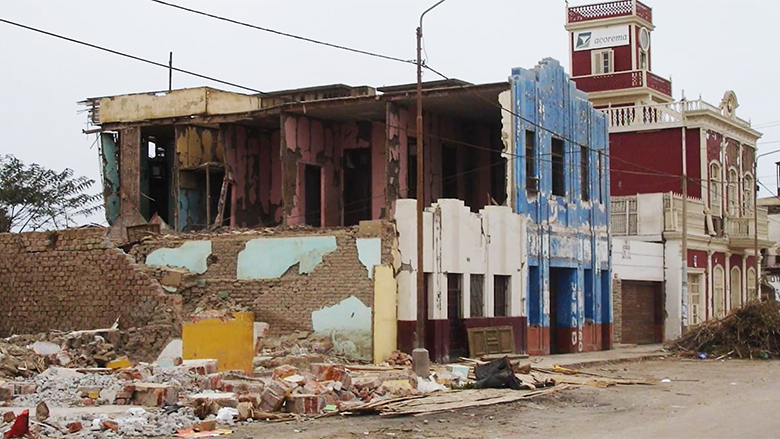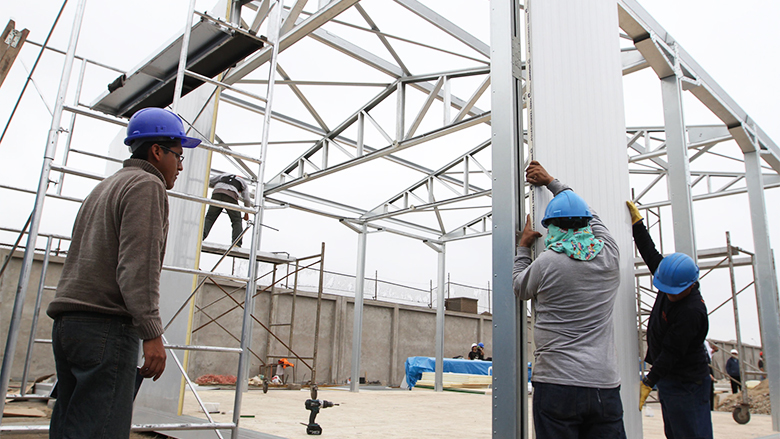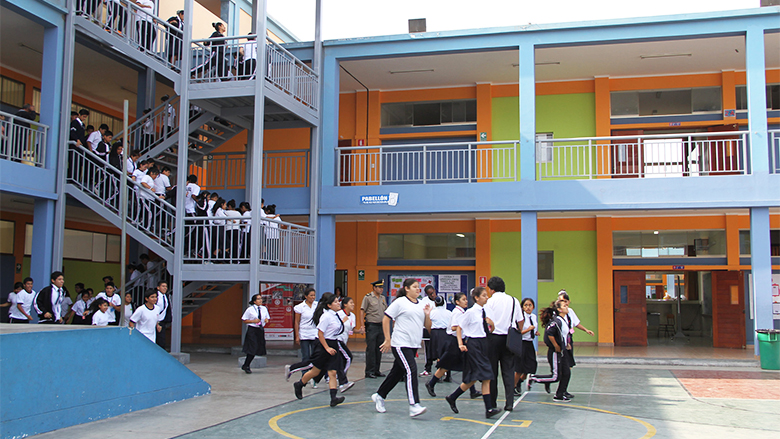Challenge
Geologic and climate-related risks posed major challenges for sustainable and resilient development in Peru and for its efforts to reduce poverty. Peru lies in the “Pacific Ring of Fire,” a highly seismic region where about 80 % of the world’s earthquakes occur. Furthermore, its location on the tropical west coast of South America exposes the country to El Niño oscillations, which are characterized by prolonged, torrential rains. Due to the lack of land-use planning, inconsistent application of technical standards, and insufficient mainstreaming of hazard and risk knowledge to shape decision-making processes, disaster risk had been increasing. Forty-six percent of the nation’s territory is used or occupied by over one-third of the population, most living in conditions of high to very high vulnerability. Nearly half of the country’s 32.5 million people have been affected by floods, droughts, forest fires, earthquakes, landslides, or volcanic eruptions, and more than 511,000 people lost their homes to natural disasters between 1990 and 2020.
Approach
Peru was among the first countries to use the Bank’s Development Policy Loan with a Catastrophe Deferred Drawdown Option (Cat DDO) and has made substantial progress in advancing the disaster risk management (DRM) agenda. The Peru Cat DDO operation aimed to support the government’s efforts to strengthen the country’s institutional and legal framework for promoting risk reduction and reducing its fiscal and physical vulnerability to disasters in key sectors. These efforts include (i) establishing a results-based budgetary program for DRM, (ii) approving the DRM law and the DRM plan to implement the mandates under the law, (iii) developing a financial protection strategy against disasters with a range of instruments to improve capacity to mobilize resources in the event of a disaster, and (iv) working closely with sectors managing critical and essential infrastructure. Peru has achieved important milestones and has been widely recognized in the Latin America and Caribbean region for its progress.

Results
Between the operation’s approval in 2010 and its closure in 2020, the government of Peru introduced policy reforms focused on strengthening the nation’s capacity to mobilize resources in the event of a disaster and to promote risk reduction. The Cat-DDO supported the following outcomes:
Pillar 1: Risk Reduction Policies in Public Investment
- Specific allocations for PREVAED-PP068, the budgetary program for disaster risk reduction and emergency response, grew from US$19 million in 2011 to US$400 million in 2019.
Pillar 2: Vulnerability Reduction Actions in the Government of Peru’s Priority Sectors
- The Pan-American Health Organization’s Hospital Safety Index was used to evaluate 91 % of Peru’s hospitals and institutes.
- Retrofitting investment preparations were made for five hospitals in Lima and a budget of US$24 million was allocated for work to be completed by 2022.
- The National Safer Hospitals Policy was updated and approved in 2017, mandating that all health facilities integrate risk reduction procedures.
- The Water and Sanitation National Plan 2017–2021 was approved. It includes policy guidelines and indicators related to mitigating climate change and disaster risks. Forty-one water and sanitation service companies established contingent funds for disaster risk management.
Pillar 3: Financial Protection Mechanisms against Disasters Resulting from Natural Events
- Under the Financial Protection Strategy against Disasters, the Ministry of Finance mobilized US$1.2 billion in contingent credit lines to respond to disaster impacts, and it participated in the Pacific Alliance catastrophe bond, issued by the World Bank Group in 2018, for US$200 million for earthquake risks. Following the magnitude 8.0 earthquake in 2019, this fund paid out US$60 million.
- A new public investment system (Invierte.pe) includes guidelines to integrate DRM considerations into the project formulation cycle.

